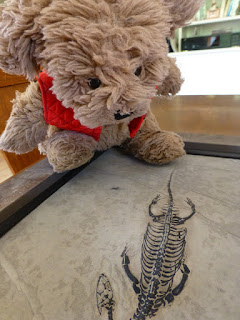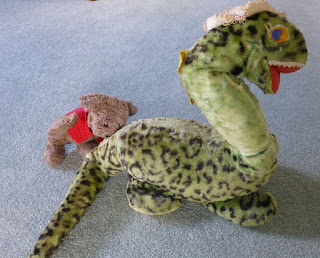 “It’s paleontology’s dirty little secret,” it says in this article I’m reading, “that we do not know the sex of our dinosaurs.” Paleontologists, many of whom do not look like Laura Dern in short shorts, aren’t often in a circumstance to have a dirty little secret, so this will have to do.
“It’s paleontology’s dirty little secret,” it says in this article I’m reading, “that we do not know the sex of our dinosaurs.” Paleontologists, many of whom do not look like Laura Dern in short shorts, aren’t often in a circumstance to have a dirty little secret, so this will have to do.
It is, on the face of it, an embarrassment at least.
Humans are hard-wired to try to detect each other’s sex. We may appear to be taking little note of each other, but let a person walk by who confuses us and most people will double around the block to get another look. We may not have any designs on the person, but somehow we have to know. Which sex are you? We’re basically narrowing it down to two, so, often, that’s why we’re confused.
I admit I did not know this embarrassing thing about paleontology. I do remember that their first T. rex is named Sue, so I assumed they had a clue. Evidently all the ones since are named Pat. The article is illustrated with a competently drawn set of theropods and one of them, the pregnant one, has a big belly. There’s even an arrow pointing at “distended abdomen.” This is speculation. Nothing in the fossilized skeletal remains would indicate a distended abdomen and thus far dinosaur maternity pants have proved to be even less likely to show up in the fossil record.
And if a given T. rex is prone to wild hormonal mood swings and rages, how would you tell?
It is possible it didn’t even matter to the dinosaurs. After all, as I have repeatedly observed over the years, chickadees are quite able to locate viable mates despite the fact that not one of them differs from any other in any particular, other than the theoretical presence of testes and ovaries. Other than that.
 Now, though, someone has managed to tease out evidence of a particular kind of bone that is present only in birds who are thinking about laying an egg, laying an egg, or have just laid an egg, the vast majority of whom have thus far proved to be female. It does seem like a lot of trouble to develop an entire kind of bone just for laying eggs, but they need the calcium for the shells, and that’s where they’re storing it. So we might have a potential sex marker for our fossilized dinosaurs. Sociologists consulted, of which there are zero, have noted that it won’t help us identify a female dinosaur who has decided to concentrate on a career instead.
Now, though, someone has managed to tease out evidence of a particular kind of bone that is present only in birds who are thinking about laying an egg, laying an egg, or have just laid an egg, the vast majority of whom have thus far proved to be female. It does seem like a lot of trouble to develop an entire kind of bone just for laying eggs, but they need the calcium for the shells, and that’s where they’re storing it. So we might have a potential sex marker for our fossilized dinosaurs. Sociologists consulted, of which there are zero, have noted that it won’t help us identify a female dinosaur who has decided to concentrate on a career instead.
I admit I’m surprised. I know paleontologists have extrapolated entire dinosaurs on the basis of a single toe bone. One time some scientists discovered a mashed-together batch of dinosaur hatchling bones that appeared to be pocked by digestive juices; they concluded they were looking at the remains of a regurgitated crop pellet, which means paleontologists, bless their bones, are capable of recognizing fossil barf, but they don’t consider that a dirty little secret.
All of the T. rexes examined were rather roomy through the hips and had little upper-body strength, but that doesn’t make them females. And a lot of theropods, of all available sexes, wore nice hats and accessories. They were presumed to be plenty colorful. If you’re as big as a house, there’s not a lot of point to camouflage. Maybe the boys had big pink and purple dotted frills and the girls settled for a modest gingham check. We just don’t know, yet.
But we want to know. It’s hard-wired.
So…go ask a GLTB.Or a closet Republican…
Closet Republicans are the only kinds of Republicans we have around here.
It's amazing how people are obsessed with the gender of creatures they see — not just humans. I've been watching the Eagle Cam out of Hanover, PA. Okay, I'll admit it: it's pretty much my screensaver until the eaglets fledge and fly off. Unfortunately, they have a FaceBook feed under the video, so that we can all keep in touch with the ignorance of the community. There are some very heated arguments over which gender eagle is on the nest at any given time. Who cares, as long as the eaglets are cared for? And that's not counting the negativity produced by people worrying over whether the eagles are doing an adequate job of parenting. There are a few people there who actually know something about eagles, but most of them seem to have trouble even recognizing a bird. Anyway, since dinosaurs and birds are closely related (second cousins twice-removed, I think), they probably have ways of recognizing the gender of each other that we can't grasp.
Maybe NOT. Have you SEEN any lately?
I didn't know any of this. I just assumed there was some way of knowing the difference, like the different shaped pelvic bones that humans have, would egg laying animals have a similar type difference? Slightly wider spaces between the hip bones or something? Probably one of those things we'll never really know until time travel is invented.
I don't think eggs require a big structural difference. They probably come out squishy. And even with time travel, what if they're just like chickadees? We still won't know.
I have a sex crazed female cardinal that is in constant flight against my window from early in the morning until mid-day. The male hangs out nearby as if being patient, than carries a small sunflower seed to feed her and then chases her into the woods. Spring sex is very exhausting.
Somehow, now I want to know how tired you are.
Maybe it's just as well. If they can pin down the genders, next thing you know they'll discover that there were gay dinosaurs, and the fundies will start claiming that's why they were left off the ark.
I like the whole IDEA of gay dinosaurs.
Perhaps all the remains are female because, like the black widow spider, she eats her mail when she is through with him.
the Ol'Buzzard
Have they checked that fossil barf for a mate?
Fossil barf mate would have to be a coprolite, right?
There definitely should be a rock band called "Fossil Barf Mate".
It wouldn't surprise me if there already is.
I'm hoping they're a cover band.
Would you have to look at a dinosaur's cloaca? As long as the dinos themselves knew which was which how much does it matter?
You first!
I know that fossiled turds are coprolites. I am now wondering what fossilised puke is called? And what replaced the mandatory carrot in it?
In Australia, they're known as chunderlites.
I think….
I love Australia expressions. Can't think of any right now. Wait! Moggie!
Re, egg laying bone: I've scanned these comments for a boner joke. If anyone posts one, please advise.
You could get it started, but you'd have competition–and you know what kind of competition!
Here in North Carolina, it's even more confusing. When a T Rex comes into a public restroom, it's anyone's ballgame. (shhh. please don't tell that I have a residence in both Florida AND North Carolina. It's SO embarrassing.)
I don't think you're voting hard enough!
I like the thought of a gay or a transgender dino. You're blowin' my mind, Murr!
There's bound to have been some. There are gay birds, are there not?
Hard-wired, indeed. I'm always amused when an otherwise rational person gets angry because someone chooses androgynous clothing, hairstyle, etc.
Yeah. It's like a personal affront. And what sense does that make?
Fossil barf — I love it!
I wish I had a fossil barf almost as much as I wish I had a termite fart in amber. (They exist.)
Thank you, your article is very good
viagra asli usa